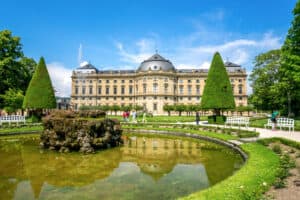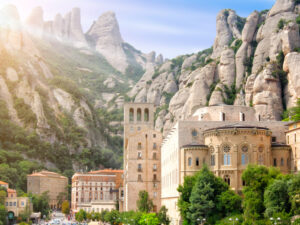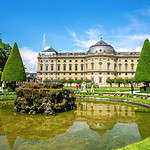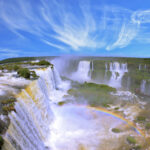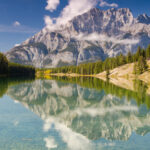Neuschwanstein Castle, situated amidst the Bavarian Alps, in Germany is an architectural masterpiece that has captured the hearts of globetrotters worldwide. This enchanting castle, commissioned by King Ludwig II of Bavaria is a must visit for anyone exploring Germany.
Constructed in the century this splendid castle was meticulously designed to resemble a knights fortress and holds the distinction of being one of Europes most exquisite and iconic castles. It has also earned the moniker “Disney Castle” owing to its role as an inspiration, for Disneylands Sleeping Beauty Castle.
Contents
- 1 Secrets of Neuschwanstein Castle: The Story Behind Its making
- 2 How Neuschwanstein became the inspiration for the Disneyland castle
- 3 A guided tour of Neuschwanstein castle is highly recommended
- 4 Things to do in the Neuschwanstein area
- 5 Visit Neuschwanstein Castle, or Hohenschwangau Castle
- 6 How to get to Neuschwanstein castle
Secrets of Neuschwanstein Castle: The Story Behind Its making
The tale of Neuschwanstein Castle began back in 1866, when King Ludwig II of Bavaria embarked on the construction of the fortress. Renowned for his appreciation of art, culture and history the king nurtured a dream to erect a magnificent castle that would truly embody his ardor for these realms. He carefully selected the castles location atop a hill, in the Bavarian Alps due, to its vistas and serene seclusion.

One fascinating secret surrounding Neuschwanstein Castle is that King Ludwig II never intended it to serve as a palace. Rather he envisioned it as a sanctuary where he could retreat from the eye and immerse himself in his passion, for art, culture and history. Furthermore the castle stood as a tribute to the King Ludwig II of the Middle Ages often referred to as “The Swan King ” and also paid homage to Richard Wagner, the composer whom the king deeply admired.
Another hidden aspect of this castle lies in its utilization of cutting edge technology at that time. King Ludwig II possessed an interest in advancements and innovations which he skillfully employed to create a grandiose and awe inspiring edifice. For instance this architectural masterpiece was constructed using a type of cement of shaping curved walls and towers. Additionally state of the art heating and ventilation systems were incorporated within its structure.
Despite the kings efforts various challenges and delays plagued the construction process of Neuschwanstein Castle. Renowned for his perfectionism King Ludwig II found himself unsatisfied with the pace of progress and continually introduced alterations and revisions to ensure precision in accordance, with his vision.
The construction of Neuschwanstein Castle took longer than anticipated resulting in its completion in 1892 a year after the passing of the King.
Among the aspects surrounding Neuschwanstein Castle is the death of King Ludwig II. His demise, in 1886 has sparked theories attempting to unravel its circumstances. Some believe it was a murder while others speculate it was suicide. However officially his cause of death was ruled as drowning leaving his demise shrouded in mystery till this day.
Neuschwanstein Castle stands as an awe inspiring marvel that has captivated travelers worldwide.. Beyond its beauty lies a collection of undisclosed secrets and tales that remain unfamiliar to many. King Ludwig II of Bavaria commissioned this castle as a sanctuary, than a traditional royal palace. However the construction process faced challenges and setbacks culminating in its completion in 1892. A year following King Ludwig IIs demise. The unresolved mysteries surrounding the kings death further enhance the allure and intrigue for those who visit Neuschwanstein Castle.
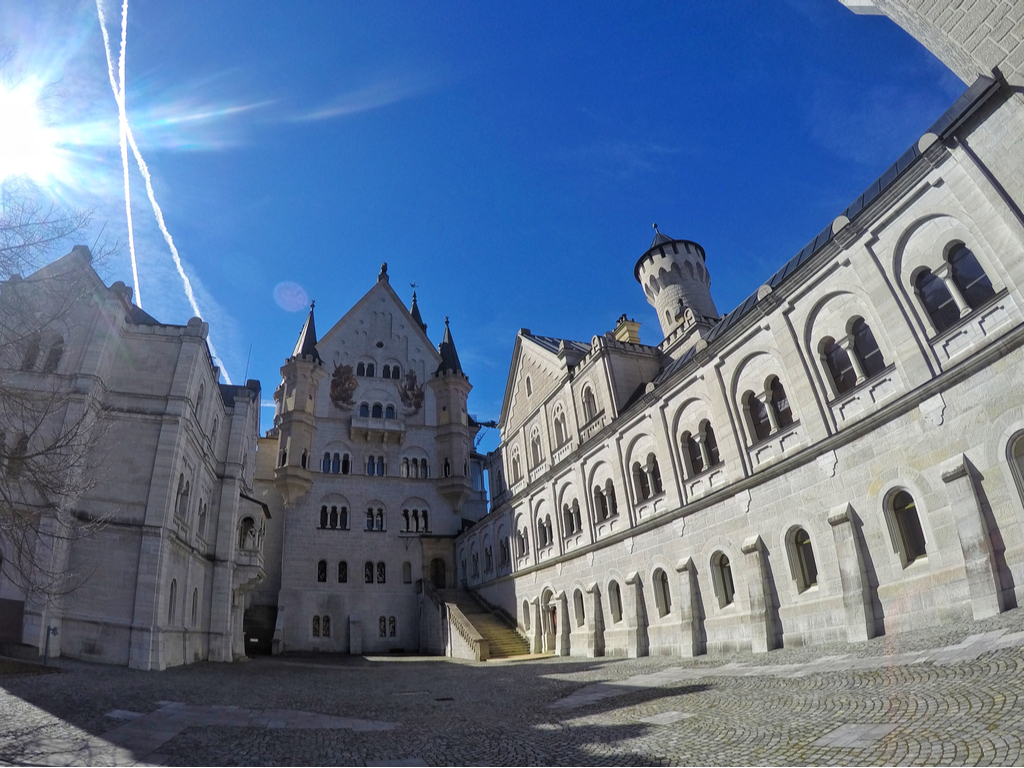
How Neuschwanstein became the inspiration for the Disneyland castle
The tale of how Neuschwanstein Castle became the inspiration, for Disneylands Sleeping Beauty Castle starts with Walt Disney himself. During a family trip to Europe in the 1950s Walt Disney stumbled upon Neuschwanstein Castle. Was captivated by its enchanting appearance. Instantly he knew that he wanted to incorporate this fairytale castle into his theme park.
When Disneyland first opened its doors in 1955 the original Sleeping Beauty Castle was relatively modest and simple. However Walt Disney yearned for a awe inspiring structure to serve as the centerpiece of his park. In 1957 he embarked on creating an improved version of Sleeping Beauty Castle drawing inspiration from Neuschwanstein Castle.
The unveiled Sleeping Beauty Castle in 1959 was meticulously designed to mirror the grandeur of Neuschwanstein Castle. From its soaring spires and pointed arches to its details every aspect paid homage to Neuschwansteins marvels. Even elements like drawbridge, moat and overall layout were influenced by Neuschwansteins design. Additionally the new castle featured a walk through experience called “Sleeping Beautys Walk ” where visitors could journey through scenes from the beloved fairy tale—similar, to the guided tours offered at Neuschwanstein Castle.
Walt Disney made a choice by using Neuschwanstein Castle as the basis, for the Sleeping Beauty Castle. This castle has become one of the known and beloved landmarks in Disneyland symbolizing the park itself. It also served as inspiration for Disney theme parks such as Disneyland Paris and Hong Kong Disneyland.
It’s safe to say that Neuschwanstein Castle greatly influenced the Sleeping Beauty Castle at Disneyland. When Walt Disney visited this castle in the 1950s it sparked his imagination. He incorporated its appearance, into his theme park. Today the Sleeping Beauty Castle is a part of the Disneyland experience closely resembling Neuschwanstein Castle and continues to captivate visitors from all corners of the globe.
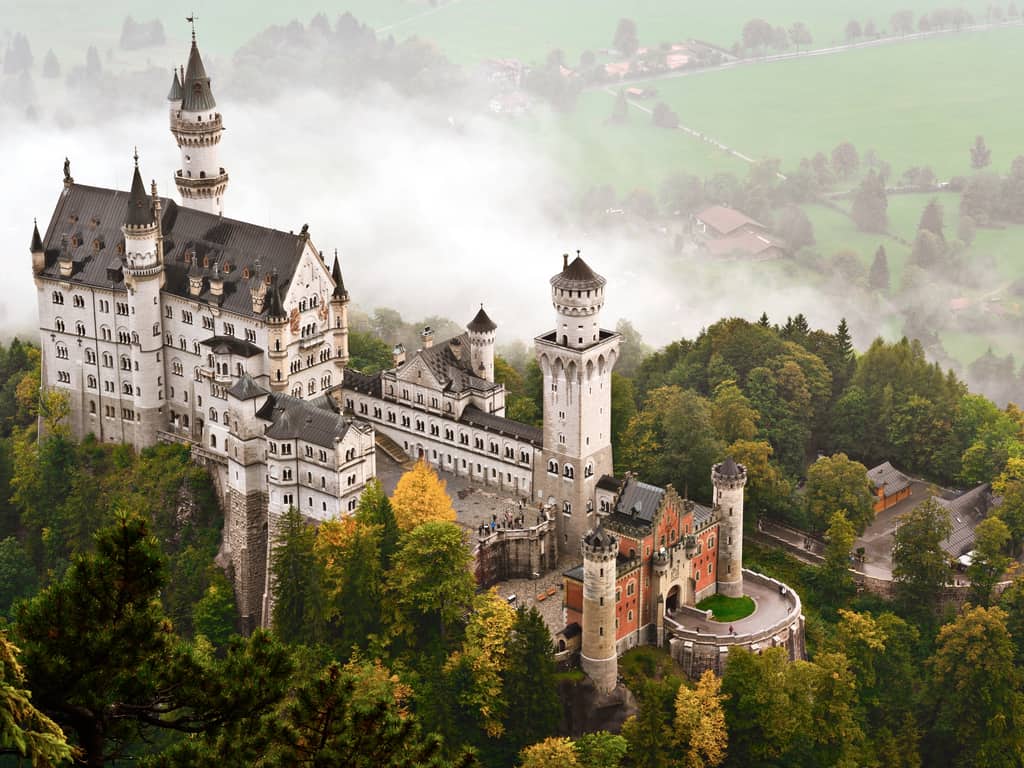
A guided tour of Neuschwanstein castle is highly recommended
Yes, it is indeed possible to visit Neuschwanstein Castle without joining a guided tour. Visitors have the option to stroll from the village of Hohenschwangau and independently enter the castle. However it’s crucial to remember that to access the castles interiors, including the throne room singing hall and kings bedroom you must partake in one of the guided tours available, in different languages.
Furthermore, it’s worth noting that there is a limit on the number of visitors allowed inside the castle. In peak seasons particularly these tours tend to sell out. Therefore it is highly recommended to secure your tour in advance so that you don’t miss out on this opportunity to witness the magnificence, within Neuschwanstein Castle.
Things to do in the Neuschwanstein area
One of the attractions, in the region is undoubtedly Neuschwanstein Castle itself. This exquisite castle, constructed in the century under the patronage of King Ludwig II of Bavaria is widely regarded as one of Europes captivating and iconic castles. Visitors have the opportunity to embark on a guided tour that unveils the castles interiors, including its throne room enchanting singing hall and opulent kings bedroom.
Another renowned highlight in this area is Hohenschwangau Castle, located a stroll away from Neuschwanstein Castle. Also commissioned by King Ludwig II and serving as his childhood residence Hohenschwangau Castle offers visitors a guided tour experience through its interiors showcasing notable spaces such as the kings bedroom and ornate throne room.
For history enthusiasts keen on immersing themselves in culture a visit to the Museum of the Bavarian Kings situated in nearby Hohenschwangau town comes highly recommended. This fascinating museum delves into the captivating narrative of kings and their significant contributions to Germanys historical tapestry.
Nature aficionados will find themselves enthralled by the landscapes surrounding Neuschwanstein Castle. The area offers opportunities for exploration, amidst its surroundings.
The castle is situated in the heart of the Bavarian Alps boasting hiking and biking trails. Among these trails the Marienbrücke stands out as the choice providing breathtaking vistas of both the castle and the majestic mountains that surround it.
For those seeking a rush paragliding is a sought after activity, in this region. Neuschwanstein Castle attracts paragliders who take advantage of its location. Visitors have the opportunity to partake in tandem flights with pilots allowing them to soak in the awe inspiring views of both the castle and its scenic mountain backdrop.
If relaxation is more your speed fear not! The vicinity around Neuschwanstein Castle also boasts spas and wellness centers. Here you can indulge in rejuvenating massages or unwind with a soothing dip, in one of their springs while basking in the picturesque beauty of the Bavarian Alps.
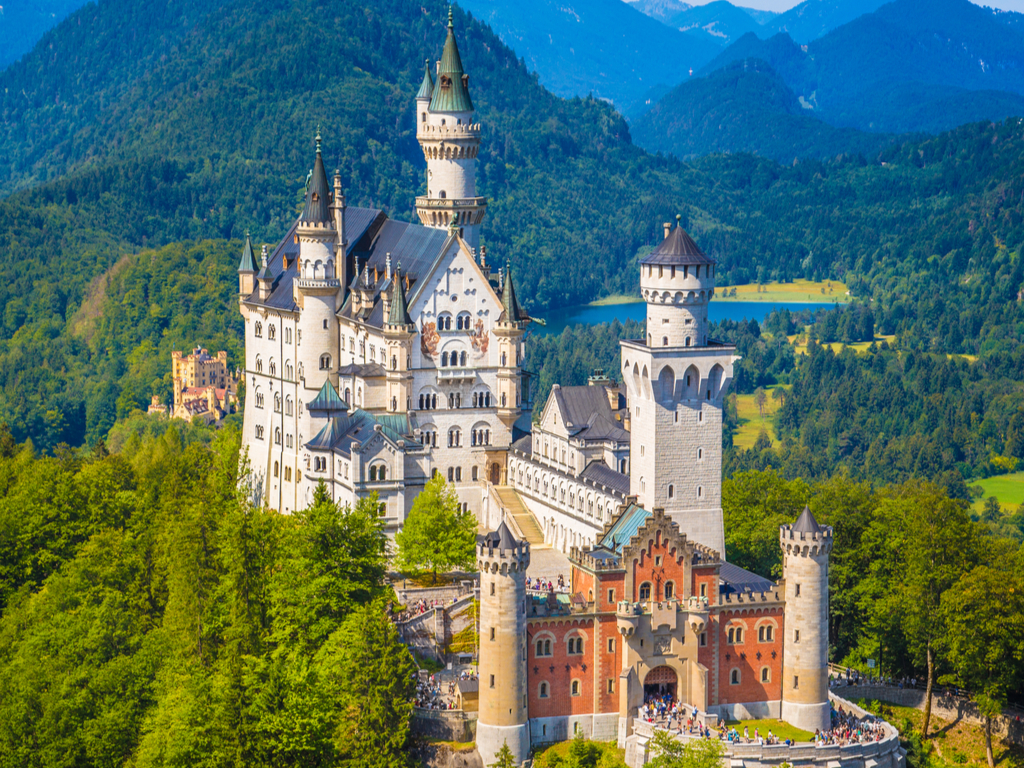
Visit Neuschwanstein Castle, or Hohenschwangau Castle
Neuschwanstein Castle stands out with its enchanting design resembling a knights fortress. Constructed during the century, under the patronage of King Ludwig II of Bavaria it has become renowned as one of Europes picturesque and iconic castles. Often referred to as the “Disney Castle ” it even served as inspiration for Disneylands Sleeping Beauty Castle. Inside visitors are treated to interiors and breathtaking views of the surrounding mountains and valleys.
A short walk away lies Hohenschwangau Castle, also commissioned by King Ludwig II and serving as his childhood residence. This castle boasts its beauty within its appointed interiors, including notable spaces like the kings bedroom and throne room. The castle is complemented by gardens and parklands inviting visitors to explore their splendor.
How to get to Neuschwanstein castle
The convenient way to visit Neuschwanstein Castle is, by car. The castle is situated in Hohenschwangau village, 60 miles (100 km) south of Munich. It takes around 2 hours to drive from Munich to Hohenschwangau allowing you to enjoy the countryside.
For those not traveling by car the next best option is to take a bus or train to Füssen, a town located 5 miles (8 km) away from Hohenschwangau. From Füssen you can. Catch a bus. Hire a taxi to reach the castle.
If traveling by train you can board a train from Munich to Füssen. Then continue your journey via bus or taxi towards Hohenschwangau. The train ride lasts 2.5 hours. Alternatively you have the option of taking a train from Frankfurt to Füssen which takes 4 hours.
Upon arriving in Hohenschwangau you have the choice of either walking for 20 minutes from the village to the castle or utilizing the shuttle bus service that transports visitors directly from the village.
Another possibility is embarking on a hike from the village of Hohenschwangau up, to the castle.
The hike typically lasts around 1.5 hours. Is regarded as challenging providing picturesque vistas of the nearby mountains and valleys. It’s important to note that certain sections of the trail can be steep and rocky.
Below you’ll find a table showcasing the distances and approximate travel times, by car and train from major cities in Germany, to Neuschwanstein Castle.
| City | Distance (km) | Distance (miles) | By Car (hours) | By Train (hours) |
|---|---|---|---|---|
| Cologne | 350 | 217 | 4.5-5 | 5-6 |
| Berlin | 600 | 373 | 7-8 | 7-8 |
| Frankfurt | 400 | 249 | 5-5.5 | 5-6 |
| Hanover | 450 | 279 | 6-6.5 | 6-7 |
| Hamburg | 600 | 373 | 8-9 | 8-9 |
| Munich | 95 | 59 | 1.5-2 | 1-2 |
| Stuttgart | 200 | 124 | 2.5-3 | 2-3 |
Please keep in mind that the travel time, by car or train is subject to change due, to traffic, route options and other factors. The estimates provided here are approximations. Should only serve as a general reference.



